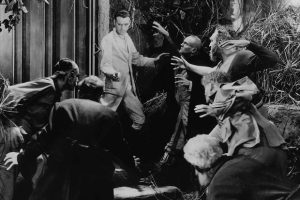Jean Baptiste Point du Sable. Often hailed as the “Father of Chicago,” Point du Sable’s story is a captivating blend of adventure, resilience, and cultural exchange. So, grab a cup of coffee and settle in as we explore the life of this extraordinary man and his significant impact on the Windy City.
Who Was Jean Baptiste Point du Sable?
Born around 1745 in what was then known as Saint-Domingue (present-day Haiti), Jean Baptiste Point du Sable was the son of a French merchant and an African mother. His early life remains somewhat shrouded in mystery, but it’s believed he received a good education in France before embarking on his journey to North America.In the 1770s, Point du Sable made his way to New Orleans and then traveled up the Mississippi River to Peoria, Illinois. It was here that he married Catherine, a Potawatomi woman, in a ceremony that celebrated both their cultures. This union not only solidified his ties to the indigenous community but also laid the foundation for his future endeavors.
Settling at the Chicago River: The Birth of a Community
Around 1779, Point du Sable settled near the mouth of the Chicago River, choosing a location that would later become one of the busiest urban centers in the United States. His choice was strategic; situated between Lake Michigan and several Native American trade routes, it offered immense potential for trade and commerce.Point du Sable established a trading post and farm that served as a hub for various groups—Native Americans, French fur traders, and British explorers. His ability to communicate in multiple languages—Spanish, French, English, and several Native American dialects—made him an invaluable mediator among these diverse communities. He provided goods like furs and food while also facilitating trade between different cultures.Imagine walking into his trading post: it was bustling with activity as people exchanged goods and stories. This vibrant atmosphere reflected Point du Sable’s commitment to fostering relationships among various groups. His home became a melting pot of cultures long before Chicago officially existed.
The Challenges He Faced: A Pioneer’s Struggles
Despite his successes, Point du Sable faced numerous challenges during his time in Chicago. The late 18th century was marked by political upheaval and shifting alliances among European powers and Native American tribes. As tensions rose during the American Revolutionary War, Point du Sable found himself caught in the crossfire.In fact, he was arrested by British forces who suspected him of being sympathetic to American patriots. However, thanks to his wife Catherine’s influence among the Potawatomi tribe and her efforts to secure his release, he managed to return to his settlement. This episode highlights not only Point du Sable’s resilience but also Catherine’s significant role in their shared success.As time went on, more settlers began to arrive in the area, drawn by its economic potential. While this influx brought opportunities for growth, it also posed threats to Point du Sable’s way of life. The encroachment of new settlers led to increased competition for resources and land—a reality that would eventually lead him to make difficult decisions about his future.
Leaving Chicago: A Bittersweet Farewell
In 1800, after two decades of building a thriving community at the mouth of the Chicago River, Point du Sable sold his property for $1,200—a considerable sum at that time—and moved westward to St. Charles, Missouri. This transition marked a significant turning point not only for him but also for the city he had helped establish.While some may view this departure as a loss for Chicago’s early history, it’s essential to recognize that Point du Sable’s legacy lived on through those who followed him. The settlement he founded laid the groundwork for what would eventually become one of America’s largest cities.However, it is worth noting that for many years after his departure, Point du Sable’s contributions were largely overlooked or forgotten. It wasn’t until much later that historians began to acknowledge his pivotal role in shaping Chicago’s early development.
Honoring His Legacy: Recognition Over Time
Fast forward to today: Jean Baptiste Point du Sable is finally receiving recognition befitting his status as Chicago’s founder. Various institutions have been named after him—schools, parks, bridges—ensuring that future generations understand the significance of this Haitian pioneer.In 1968, DuSable Harbor was named in his honor, and more recently, Lake Shore Drive was renamed Jean Baptiste Pointe DuSable Lake Shore Drive. These tributes serve as reminders not only of his contributions but also of the rich tapestry of cultures that have shaped Chicago over time.Moreover, Point du Sable’s story has inspired countless individuals who seek to understand their own roots and contributions to society. His journey from Haiti to becoming a foundational figure in Chicago serves as an empowering narrative about resilience and cultural exchange.

Lessons from Point du Sable’s Life
As we reflect on Jean Baptiste Point du Sable’s life and legacy, several key lessons emerge:
- Cultural Exchange is Vital: Point du Sable exemplified how cultural exchange can lead to mutual understanding and prosperity. By fostering relationships with diverse communities, he created an environment where everyone could thrive.
- Resilience is Key: Despite facing numerous challenges—arrests during wartime and competition from new settlers—Point du Sable remained steadfast in pursuing his vision for a thriving community.
- Recognition Matters: For too long, many contributions from marginalized communities have gone unrecognized. Honoring figures like Point du Sable helps ensure that history reflects the diversity that has shaped our societies.
- Embrace Your Roots: Understanding where we come from can empower us as individuals and communities. Point du Sable’s journey reminds us all of the importance of acknowledging our heritage while striving for progress.
A Lasting Impact
Jean Baptiste Point du Sable may have left Chicago over two centuries ago, but his impact continues to resonate today. As we navigate our own lives—whether through personal challenges or collective struggles—it’s essential to remember pioneers like him who forged paths against all odds.So next time you find yourself in Chicago or simply reflecting on its rich history, take a moment to honor Jean Baptiste Point du Sable—a Haitian man whose vision helped lay the foundation for one of America’s great cities











Add a comment